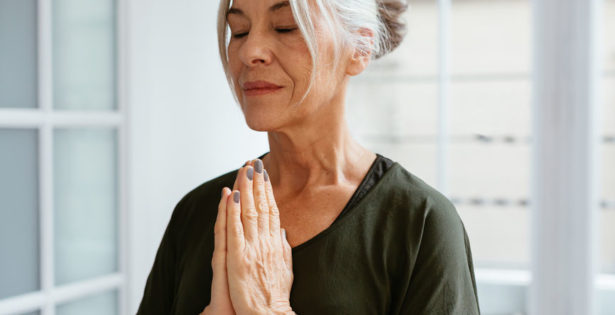WP_Query Object
(
[query] => Array
(
[category__in] => Array
(
[0] => 20
[1] => 65
)
[post__not_in] => Array
(
[0] => 6929
)
[posts_per_page] => 50
[ignore_sticky_posts] => 1
[orderby] => desc
[_shuffle_and_pick] => 3
)
[query_vars] => Array
(
[category__in] => Array
(
[0] => 20
[1] => 65
)
[post__not_in] => Array
(
[0] => 6929
)
[posts_per_page] => 50
[ignore_sticky_posts] => 1
[orderby] => desc
[_shuffle_and_pick] => 3
[error] =>
[m] =>
[p] => 0
[post_parent] =>
[subpost] =>
[subpost_id] =>
[attachment] =>
[attachment_id] => 0
[name] =>
[pagename] =>
[page_id] => 0
[second] =>
[minute] =>
[hour] =>
[day] => 0
[monthnum] => 0
[year] => 0
[w] => 0
[category_name] => pain-relief
[tag] =>
[cat] => 20
[tag_id] =>
[author] =>
[author_name] =>
[feed] =>
[tb] =>
[paged] => 0
[meta_key] =>
[meta_value] =>
[preview] =>
[s] =>
[sentence] =>
[title] =>
[fields] =>
[menu_order] =>
[embed] =>
[category__not_in] => Array
(
)
[category__and] => Array
(
)
[post__in] => Array
(
)
[post_name__in] => Array
(
)
[tag__in] => Array
(
)
[tag__not_in] => Array
(
)
[tag__and] => Array
(
)
[tag_slug__in] => Array
(
)
[tag_slug__and] => Array
(
)
[post_parent__in] => Array
(
)
[post_parent__not_in] => Array
(
)
[author__in] => Array
(
)
[author__not_in] => Array
(
)
[search_columns] => Array
(
)
[suppress_filters] =>
[cache_results] => 1
[update_post_term_cache] => 1
[update_menu_item_cache] =>
[lazy_load_term_meta] => 1
[update_post_meta_cache] => 1
[post_type] =>
[nopaging] =>
[comments_per_page] => 50
[no_found_rows] =>
[order] => DESC
)
[tax_query] => WP_Tax_Query Object
(
[queries] => Array
(
[0] => Array
(
[taxonomy] => category
[terms] => Array
(
[0] => 20
[1] => 65
)
[field] => term_id
[operator] => IN
[include_children] =>
)
)
[relation] => AND
[table_aliases:protected] => Array
(
[0] => wp_term_relationships
)
[queried_terms] => Array
(
[category] => Array
(
[terms] => Array
(
[0] => 20
[1] => 65
)
[field] => term_id
)
)
[primary_table] => wp_posts
[primary_id_column] => ID
)
[meta_query] => WP_Meta_Query Object
(
[queries] => Array
(
)
[relation] =>
[meta_table] =>
[meta_id_column] =>
[primary_table] =>
[primary_id_column] =>
[table_aliases:protected] => Array
(
)
[clauses:protected] => Array
(
)
[has_or_relation:protected] =>
)
[date_query] =>
[request] =>
SELECT SQL_CALC_FOUND_ROWS wp_posts.ID
FROM wp_posts LEFT JOIN wp_term_relationships ON (wp_posts.ID = wp_term_relationships.object_id)
WHERE 1=1 AND wp_posts.ID NOT IN (6929) AND (
wp_term_relationships.term_taxonomy_id IN (20,65)
) AND ((wp_posts.post_type = 'post' AND (wp_posts.post_status = 'publish' OR wp_posts.post_status = 'acf-disabled')))
AND ID NOT IN
(SELECT `post_id` FROM wp_postmeta
WHERE `meta_key` = '_pilotpress_level'
AND `meta_value` IN ('','employee')
AND `post_id` NOT IN
(SELECT `post_id` FROM wp_postmeta
WHERE `meta_key` = '_pilotpress_level'
AND `meta_value` IN ('' )))
GROUP BY wp_posts.ID
ORDER BY wp_posts.post_date DESC
LIMIT 0, 50
[posts] => Array
(
[0] => WP_Post Object
(
[ID] => 8382
[post_author] => 3
[post_date] => 2021-11-05 19:14:13
[post_date_gmt] => 2021-11-05 19:14:13
[post_content] =>
Early in my practice, people told me I should choose one area of medicine to specialize in, but I was resistant to it because of the lack of variety. Also, it seemed that the natural specialization for me would be pain since I have a knack for treating it, and that sounded, well, kind of boring.
But I gradually began focusing in that direction, and over the years my understanding of pain broadened. I became interested in the whole human experience of suffering, which was like finding a loophole because it’s a pretty vast spectrum.
Suffering is fascinating.
As much as humans hate suffering, we have a curiously complicated relationship with it. We watch movies and read books about it for entertainment. We ache when we see others suffer, but we kind of like the ache. We try it out intentionally (ghost peppers anyone?) and we’re compelled to learn the graphic details of a tragedy just so we can feel it more richly. Often we simultaneously generate it and resist it. And sometimes, we turn it into an incredible, life-changing blessing.
To an extent, it seems that when good outcomes happen after a period of suffering, it's evidence of healthy adaptive mechanisms that help us make the best of a bad situation. But occasionally the suffering appears to be a kind of magic ingredient that provokes an evolution (or a revolution) that wouldn’t have otherwise occurred.
Few people would ask to suffer, but studies show that when they look back on how suffering ultimately facilitated a great favorable change, most say they wouldn’t change anything.
Well, maybe one thing.
If only they could have trusted, they reflect, it could have been a different experience.
On top of the discomfort of suffering we often add an additional dimension of discomfort in the form of resistance (which is often triggered by fear). When the resistance stops – because we just can’t keep it up any longer, or through a conscious choice to trust and relinquish the resistance – this is when something else enters the equation. What do you call it? Grace? Clarity? Insight? And the suffering becomes a portal to a new way of being.
Today, when you encounter some suffering – maybe it will just be a little micro-suffering – what happens if you don’t resist it? What happens when you say, “I choose to trust” and dive into it?
I’d love to hear your thoughts on this (in the comments section below). Have you had experience where suffering facilitated something good? What was the pivotal point, when it turned from suffering into grace? Did that change your relationship with suffering? Do you trust more? Why or why not?
Love,
Peter
[post_title] => From Suffering to Grace
[post_excerpt] =>
[post_status] => publish
[comment_status] => open
[ping_status] => open
[post_password] =>
[post_name] => from-suffering-to-grace
[to_ping] =>
[pinged] =>
[post_modified] => 2021-11-05 19:18:43
[post_modified_gmt] => 2021-11-05 19:18:43
[post_content_filtered] =>
[post_parent] => 0
[guid] => https://thedragontree.com/?p=8382
[menu_order] => 0
[post_type] => post
[post_mime_type] =>
[comment_count] => 15
[filter] => raw
[webinar_id] => 0
)
[1] => WP_Post Object
(
[ID] => 8355
[post_author] => 3
[post_date] => 2021-09-29 23:06:00
[post_date_gmt] => 2021-09-29 23:06:00
[post_content] =>
A few years ago, my wife and I were at a school meeting and the teacher, a seasoned elder, was telling the parents about the various challenges our kids were facing. As we concluded she said, “You’ve got great kids. The thing is . . .” She paused and seemed hesitant, and then set her jaw and continued, “Look, I don’t mean to offend anyone, and I hope you’ll take this the right way because it’s important. Your kids lack grit.” As she scanned our faces, I think she wanted to say that many of us adults lacked grit too.
We still have certain hardships today, but because life is undoubtedly easier for most people, it’s quite possible to live a normal lifespan with very little grit. Although this grit deficiency is widespread among modern people, the upside is that we generally have higher emotional intelligence than our ancestors did.
There’s a big difference between managing intense emotions because we’re emotionally intelligent versus being unaffected by emotions because we don’t feel them. Grit often goes along with emotional suppression, which was probably a more common coping mechanism in previous generations, in part because we just didn’t talk about our feelings much. The downside was a narrowed experience of life and lots of dysfunctional relationships.
My point is that what we call “grit” often comes at a high price. But grit and emotional intelligence aren’t mutually exclusive qualities. We can be tough without being shut down emotionally. In fact, the better we understand our emotional landscape, the more resilient we are, the healthier our supportive relationships are, and the less daunting it is to step out of our comfort zone.
The cultivation of both grit and emotional intelligence requires a willingness to be uncomfortable. When you think of a person with grit perhaps you imagine them sleeping on the ground, plodding through snow in order to deliver the mail, getting thrown off a horse and climbing back on, or having to use non-organic soymilk in their latte. (Soymilk is almost synonymous with grit, am I right? 😉)
We’d be best served with a combination of both qualities. Grit without emotional intelligence implies a person who can be tough and tenacious, but won’t get to fully experience the journey and rewards of whatever they invest their grit into pursuing. As for emotional intelligence without grit, a person may fully understand what they’re feeling but be unable to stand up to their emotions when they threaten to take over, nor to stand up and say what needs to be said in order to clear the air, maintain integrity, and honor their boundaries.
One silver lining of this pandemic is that I've seen more emotionally intelligent grit in people than ever. It takes grit to make do with shortages of food and toilet paper, to find ways to get our kids educated when schools are closed, to figure out how to make ends meet when our jobs and businesses disappear, and to change our behaviors to reduce the spread of a contagious disease. The emotional intelligence aspect is not letting our fear be the driver, instead being guided in all our adaptations by homing in on what's most important. For instance: family, community, service, vibrant health, kindness, and ecology. It
means honoring the choice that mere survival isn’t enough.
This brings us to the crux of emotionally intelligent grit, which is that having a higher purpose is essential. Without it, we adapt without heart. To me, a high purpose always implies an intention that goes beyond personal gain. It inspires the willingness to be uncomfortable as we develop and maintain these muscles, and the world is made better by this sacrifice.
Be well, and not too comfortable,
Peter
[post_title] => Grit and Emotional Intelligence
[post_excerpt] =>
[post_status] => publish
[comment_status] => open
[ping_status] => open
[post_password] =>
[post_name] => grit-and-emotional-intelligence
[to_ping] =>
[pinged] =>
[post_modified] => 2021-09-30 16:33:47
[post_modified_gmt] => 2021-09-30 16:33:47
[post_content_filtered] =>
[post_parent] => 0
[guid] => https://thedragontree.com/?p=8355
[menu_order] => 0
[post_type] => post
[post_mime_type] =>
[comment_count] => 10
[filter] => raw
[webinar_id] => 0
)
[2] => WP_Post Object
(
[ID] => 8949
[post_author] => 3
[post_date] => 2023-02-08 20:41:47
[post_date_gmt] => 2023-02-08 20:41:47
[post_content] =>
In my early 20s I had a boss who would ask me every morning, “How goes the battle?” I had never heard that expression before, but recognized that he meant, “How’s it going?” At the time I was learning about neuro-linguistic programming and becoming attuned to people’s word choices, so it struck me as an interesting – and loaded – phrase. Then I began to notice how common it is for people to characterize life as a fight – an ongoing series of conflicts, something we need to slog through, with a risk of imminent danger and an us-versus-them mentality.
Even if we see ourselves as winning the battle, if we hold this perspective, there’s still a chance of getting ambushed, right up to the last minute. So, we must always have our guard up, sleep with one eye open, check our drink for poison, and so on. It causes chronic stress, and we’re never entirely free.
Meanwhile, there are people who see life in a more positive light – as a game, a gift, an opportunity to explore, connect, experience, and be of service. Are they naïve? Are they less successful? Are they blindsided by the unexpected? I don’t believe so. If anything, because their perspective isn’t innately stress-inducing, they have greater resources for adapting to whatever comes.
I encourage you to examine your relationship with the world. How would you sum up your story? What kind of words do you use, both to others and yourself, when you talk and think about your challenges and ambitions? How do you feel about others aiming for the same goals as you? What sorts of bodily feelings go along with this? For extra support in re-wiring yourself, check out our workbook, Freedom, and try doing it for a month.
If you do find that you’re harboring a “battle” mentality, I wonder if it’s possible for you to symbolically wave the white flag, saying to the world (and yourself), “I’m not at war with you.” I know the stakes feel very high sometimes, but what if. . . (1) you could clearly see that being in ongoing conflict is more detrimental than it is beneficial to you, and (2) you had an unwavering link to something you could trust, an assurance that you are fundamentally okay, no matter what.
We often speak of rousing our inner warrior and the term “warrior” comes up a lot in self-help books. The warrior archetype is deep in our collective consciousness. Everyone knows it. And there’s a good side to it. Often, we evoke the warrior archetype when we wish to inspire ourselves to be clear, sharp, and disciplined, to stand up for our values, to protect those in need, to be brave, to have integrity and honor. But the other side of being a warrior is, of course, that you’re at war.
How can we embody these virtues without the sense of perpetual conflict? We live according to archetypes all the time – father, mother, husband, wife, cop, healer, good guy, bad guy, peacekeeper, curmudgeon, artist – mostly without realizing it. The first step is to become aware of the archetypes we’re subconsciously abiding by. Just making it conscious starts the process of releasing us from an archetype’s limitations.
Second, we can begin to forge a picture of something better and freer than any single archetype – our own Highest Self. Who would you be if you were clear, lighthearted, determined, loving, creative, peaceful, spiritual, purposeful, artful, present, honest, forgiving, kind, and brave?
Contrary to what your mind might say, that’s not too many virtues for one person to possess. You’re already somewhere on the spectrum of embodying every one of them. Whatever you dub this most-evolved you – Highest Self, Noble Leader, Queen/King, Divine Being, etc. – know that this is something you can freely choose at any moment.
Spend some time visualizing and feeling into this Highest Self. Imagine that she/he is just waiting for permission to step into the driver’s seat. When your small mind takes over and your habits run you, the Highest Self is nudged into the backseat. It may take some conscious surrender to let go of your default program and allow the better You to be in charge.
Another visualization you might find useful is to see yourself in the center of a circle of many different versions of yourself – all the possible ways you could be. Look around and see if you can spot the one that is the clearest, highest expression of your virtuous essence. Make a choice, and step into that Self. Try doing this every morning for a week and see what changes.
Be well,
Peter
[post_title] => Be Better Than A Warrior
[post_excerpt] =>
[post_status] => publish
[comment_status] => open
[ping_status] => open
[post_password] =>
[post_name] => be-better-than-a-warrior
[to_ping] =>
[pinged] =>
[post_modified] => 2023-02-08 20:41:47
[post_modified_gmt] => 2023-02-08 20:41:47
[post_content_filtered] =>
[post_parent] => 0
[guid] => https://thedragontree.com/?p=8949
[menu_order] => 0
[post_type] => post
[post_mime_type] =>
[comment_count] => 1
[filter] => raw
[webinar_id] => 0
)
)
[post_count] => 3
[current_post] => -1
[before_loop] => 1
[in_the_loop] =>
[post] => WP_Post Object
(
[ID] => 8382
[post_author] => 3
[post_date] => 2021-11-05 19:14:13
[post_date_gmt] => 2021-11-05 19:14:13
[post_content] =>
Early in my practice, people told me I should choose one area of medicine to specialize in, but I was resistant to it because of the lack of variety. Also, it seemed that the natural specialization for me would be pain since I have a knack for treating it, and that sounded, well, kind of boring.
But I gradually began focusing in that direction, and over the years my understanding of pain broadened. I became interested in the whole human experience of suffering, which was like finding a loophole because it’s a pretty vast spectrum.
Suffering is fascinating.
As much as humans hate suffering, we have a curiously complicated relationship with it. We watch movies and read books about it for entertainment. We ache when we see others suffer, but we kind of like the ache. We try it out intentionally (ghost peppers anyone?) and we’re compelled to learn the graphic details of a tragedy just so we can feel it more richly. Often we simultaneously generate it and resist it. And sometimes, we turn it into an incredible, life-changing blessing.
To an extent, it seems that when good outcomes happen after a period of suffering, it's evidence of healthy adaptive mechanisms that help us make the best of a bad situation. But occasionally the suffering appears to be a kind of magic ingredient that provokes an evolution (or a revolution) that wouldn’t have otherwise occurred.
Few people would ask to suffer, but studies show that when they look back on how suffering ultimately facilitated a great favorable change, most say they wouldn’t change anything.
Well, maybe one thing.
If only they could have trusted, they reflect, it could have been a different experience.
On top of the discomfort of suffering we often add an additional dimension of discomfort in the form of resistance (which is often triggered by fear). When the resistance stops – because we just can’t keep it up any longer, or through a conscious choice to trust and relinquish the resistance – this is when something else enters the equation. What do you call it? Grace? Clarity? Insight? And the suffering becomes a portal to a new way of being.
Today, when you encounter some suffering – maybe it will just be a little micro-suffering – what happens if you don’t resist it? What happens when you say, “I choose to trust” and dive into it?
I’d love to hear your thoughts on this (in the comments section below). Have you had experience where suffering facilitated something good? What was the pivotal point, when it turned from suffering into grace? Did that change your relationship with suffering? Do you trust more? Why or why not?
Love,
Peter
[post_title] => From Suffering to Grace
[post_excerpt] =>
[post_status] => publish
[comment_status] => open
[ping_status] => open
[post_password] =>
[post_name] => from-suffering-to-grace
[to_ping] =>
[pinged] =>
[post_modified] => 2021-11-05 19:18:43
[post_modified_gmt] => 2021-11-05 19:18:43
[post_content_filtered] =>
[post_parent] => 0
[guid] => https://thedragontree.com/?p=8382
[menu_order] => 0
[post_type] => post
[post_mime_type] =>
[comment_count] => 15
[filter] => raw
[webinar_id] => 0
)
[comment_count] => 0
[current_comment] => -1
[found_posts] => 101
[max_num_pages] => 3
[max_num_comment_pages] => 0
[is_single] =>
[is_preview] =>
[is_page] =>
[is_archive] => 1
[is_date] =>
[is_year] =>
[is_month] =>
[is_day] =>
[is_time] =>
[is_author] =>
[is_category] => 1
[is_tag] =>
[is_tax] =>
[is_search] =>
[is_feed] =>
[is_comment_feed] =>
[is_trackback] =>
[is_home] =>
[is_privacy_policy] =>
[is_404] =>
[is_embed] =>
[is_paged] =>
[is_admin] =>
[is_attachment] =>
[is_singular] =>
[is_robots] =>
[is_favicon] =>
[is_posts_page] =>
[is_post_type_archive] =>
[query_vars_hash:WP_Query:private] => 04e855496ab006ff8b43718e24177fd4
[query_vars_changed:WP_Query:private] =>
[thumbnails_cached] =>
[allow_query_attachment_by_filename:protected] =>
[stopwords:WP_Query:private] =>
[compat_fields:WP_Query:private] => Array
(
[0] => query_vars_hash
[1] => query_vars_changed
)
[compat_methods:WP_Query:private] => Array
(
[0] => init_query_flags
[1] => parse_tax_query
)
)



 Cart
Cart






